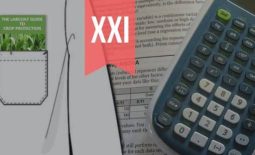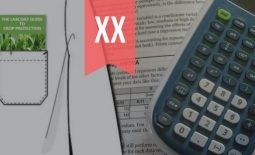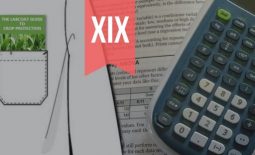Guide to Essential BioStatistics II: Proposing a Hypothesis (the Null Hypothesis)
In this second article in the LabCoat Guide to BioStatistics series, we learn how to propose a hypothesis. In the previous article in this series, we explored the Scientific Method. Future articles will cover: Designing and implementing experiments (Significance, Power, Effect, Variance, Replication and Randomization), Critically evaluating experimental data (Q-test; SD, SE and 95%CI) and Concluding whether to accept or reject the hypothesis (F- and T-tests, Chi-square, ANOVA and post-ANOVA testing).
The scientist is not a person who gives the right answers; he is one who asks the right questions – Claude Levi-Strauss (French anthropologist)
Several years ago, I was part of a research team working on the development of herbicide safeners. Herbicide safeners are (typically) chemicals which protect crops from herbicide injury by accelerating the metabolism of herbicides, or by inhibiting their translocation within plants, facilitating selectivity between crop plants and weed species targeted by the herbicide.
At the time we ran herbicide safener experiments in a dedicated section of the greenhouse which was adjacent to a section containing plants under evaluation for leaf damage (phytotoxicity) as a result of treatment with one of our commercial insecticide products.
We had hit a wall with regard to identifying a formulation additive which could reduce phytotoxicity without reducing insecticidal activity. The project had been placed on hold while we considered our next steps.
Shortly after starting the herbicides safener experiments, we observed that herbicide-treated plants showed the same symptoms of oxidative damage as the adjacent insecticide-treated plants. An idea began to germinate.
Following the precepts of the scientific method, we had made an interesting observation: the symptoms of insecticide phytotoxicity appeared identical to those of oxidative herbicide phytotoxicity.
A quick literature study confirmed that leaf damage by insecticides (phytotoxicity) can in many cases be ascribed to membrane peroxidation arising from reactive oxygen species.
The herbicide safener being tested reduced herbicidal symptoms so effectively that we questioned whether it would be able to reduce the phytotoxicity of the insecticide – perhaps this was the elusive formulation additive which could reduce phytotoxicity without reducing insecticidal activity? We were on our way to developing a hypothesis!
A hypothesis is the basic tenet of the scientific method. It is often described as an “educated guess” to account for an observed phenomenon or for a research idea, and is based on prior knowledge and observation.
A Research or Working Hypothesis is a proposal or prediction to be proved or disproved through experimentation or observation.
A Research Hypothesis may be formulated using Boolean IF/THEN logic:
- IF the charger is defective THEN a new charger will charge my phone
- IF herbicide safeners prevent herbicide phytotoxicity THEN herbicide safeners could prevent insecticide phytotoxicity
In the previous section it was determined that if your smartphone charges consistently, then the hypothesis may be considered to be supported.
In practice however, we can never be sure that the charger functions consistently (for example the socket may have a 1% malfunction rate, which we would not observe with a few replicates). Thus, although the evidence supports the hypothesis, it does not necessarily prove that the hypothesis is correct.
A fundamental aspect of the scientific method is Karl Popper’s Principle of Falsification: for any hypothesis to be valid, it must be disprovable before it can become accepted as a scientific hypothesis.
Put simply: repeated observations of white swans do not prove the hypothesis that all swans are white, but the observation of a single black swan disproves the hypothesis. (Fun fact: Until 1697 when Dutch explorers became the first Europeans to see black swans (Cygnus atratus) in Australia, it was presumed – at least by European scientists – that black swans did not exist).
Without deviating further down this philosophical rabbit hole, we say that rather than proving the working hypothesis, researchers follow the Popperian Scientific method where ‘nothing in the sciences can be proven, only disproven’.
Researchers thus work to reject or disprove the Null hypothesis – the default hypothesis that ‘nothing happened’. Researchers also devise an alternate hypothesis – one that they think explains a phenomenon – but work to reject the Null hypothesis.
The Null hypothesis (H0) is the hypothesis that the data generated by an experiment occurred by mere chance and was not affected by the treatment – “nothing happened”. The alternative hypothesis (H1) is the hypothesis that the data generated was influenced by the treatment, “something did happen”.
So, for our herbicides safener case an appropriate research question was: could herbicide safeners effectively reduce insecticide phytotoxicity?
From this a Research hypothesis could be formulated: “IF herbicide safeners reduce herbicide phytotoxicity, THEN herbicide safeners could reduce insecticide phytotoxicity”, and the associated Null hypothesis and its alternate may take the form:
▶︎ Null hypothesis (H0): There is no difference between treatments
▶︎ Alternative hypothesis (H1): There is a difference between treatments
Following experimentation and the statistical evaluation of whether the Null hypothesis provides a valid explanation of the data, the Null hypothesis may be rejected or accepted with a certain level of probability, or confidence (for example, 95% confidence – more on this later).
This element of probability arises because we are generally not able to test the entire population, and work with samples instead, which brings in a “black swan” element of probability.
Figure 1: The sample is a subset of the population.
Thus, we speak of “rejecting the Null hypothesis in favour of the alternative hypothesis, and “failing to reject the Null hypothesis” rather than of “accepting the Null hypothesis”, as we have no way of proving that the data occurred by chance. Similarly, “failed to prove the prisoner is guilty” is not the same as “proved the prisoner is innocent”.
Figure 2. The Scientific Method.
In the example above, if there is a difference between the safened and unsafened treatments, we reject the Null hypothesis that “nothing happened” and shift our belief to the alternate hypothesis that “something did happen” (although the latter has not been proven).
With this information on the Scientific Method and Hypotheses, we are ready to move on to the next article in this series: Experimental Parameters.
The first two books in the LABCOAT GUIDE TO CROP PROTECTION series are now published and available in eBook and Print formats!
Aimed at students, professionals, and others wishing to understand basic aspects of Pesticide and Biopesticide Mode Of Action & Formulation and Strategic R&D Management, this series is an easily accessible introduction to essential principles of Crop Protection Development and Research Management.
A little about myself
I am a Plant Scientist with a background in Molecular Plant Biology and Crop Protection.
20 years ago, I worked at Copenhagen University and the University of Adelaide on plant responses to biotic and abiotic stress in crops.
At that time, biology-based crop protection strategies had not taken off commercially, so I transitioned to conventional (chemical) crop protection R&D at Cheminova, later FMC.
During this period, public opinion, as well as increasing regulatory requirements, gradually closed the door of opportunity for conventional crop protection strategies, while the biological crop protection technology I had contributed to earlier began to reach commercial viability.








